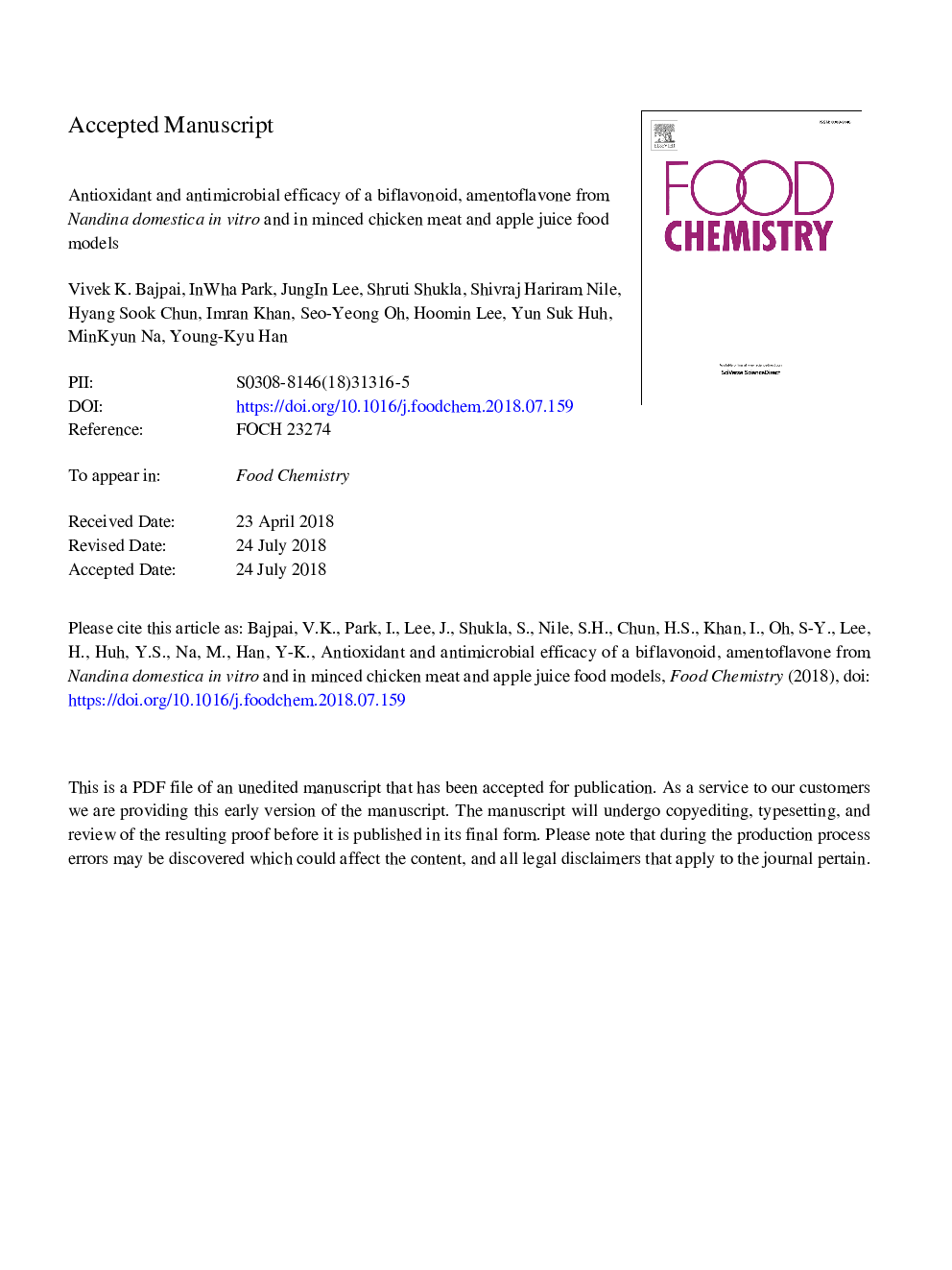| Article ID | Journal | Published Year | Pages | File Type |
|---|---|---|---|---|
| 7584121 | Food Chemistry | 2019 | 36 Pages |
Abstract
A biflavonoid, amentoflavone isolated from Nandina domestica and characterized by NMR spectral-data analyses was assessed for its antioxidant, and antibacterial potential in vitro and in food-model systems. Amentoflavone exhibited potent antioxidant ability (19.21-75.52%) on scavenging DPPH, ABTS, superoxide, and hydroxyl radicals. Fluorescent images confirmed bacterial membrane depolarization of both the tested pathogens Staphylococcus aureus and Escherichia coli, with a significant reduction in cell viabilities at their respective MIC of 62.5 and 125â¯Âµg/mL. Increasing rates of membrane permeability observed in 260â¯nm-absorbing material, potassium ion, extracellular ATP, and relative electrical conductivity assays confirmed antibacterial mechanistic role of amentoflavone as also evidenced by microscopic studies of SEM and TEM. There was a marked inhibitory effect of amentoflavone with a significant reduction in cell counts of S. aureus and E. coli in minced chicken and apple juice at 4â¯Â°C, thus suggesting its nutritional enhancing efficacy as a natural antioxidant and antimicrobial agent.
Related Topics
Physical Sciences and Engineering
Chemistry
Analytical Chemistry
Authors
Vivek K. Bajpai, InWha Park, JungIn Lee, Shruti Shukla, Shivraj Hariram Nile, Hyang Sook Chun, Imran Khan, Seo Yeong Oh, Hoomin Lee, Yun Suk Huh, MinKyun Na, Young-Kyu Han,
